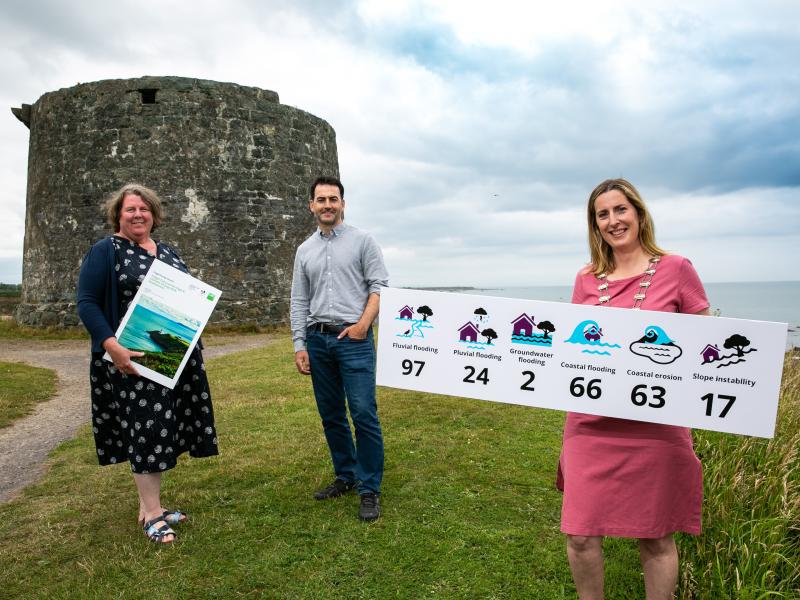A study of the vulnerability of Fingal’s 2000 plus, heritage assets-our archaeological monuments, protected structures, geological heritage sites, historic gardens and demesnes-to climate hazards has been undertaken.
Projected changes to the Irish climate will have implications for archaeology and built heritage. Rising sea levels, flooding and coastal erosion along with wetter winters and drier summers can be expected to give rise to structural damage to monuments and historic properties. This will mean the loss of ground adjacent to structures, exposure and erosion of archaeological sites, and collapse of unstable masonry elements. Other slow-onset risks identified include the loss of historic landscape features and decay of building fabric.
A study of the vulnerability of Fingal’s 2000 plus, heritage assets-our archaeological monuments, protected structures, geological heritage sites, historic gardens and demesnes-to climate hazards has been undertaken. The aim of this project was to apply the assessment model developed by Historic Environment Scotland (HES) to the Irish context, using Fingal as the pilot study area. This is the first assessment of its kind in Ireland.
This GIS based project was led by a multidisciplinary steering group which provided input from the Geological Survey of Ireland, CHERISH, Dublin Metropolitan Climate Action Regional Office, Climate Ireland along with Fingal’s Heritage, Conservation and IT officers. Landuse Consultants were commissioned to assess the risk to Fingal’s cultural heritage based by analysing the likelihood and severity of risk from six categories of natural hazards: fluvial flooding, pluvial flooding, groundwater flooding, coastal flooding, coastal erosion and land instability on Fingal’s heritage assets.
Mayor of Fingal Cllr. Seána O’Rodaigh said: 'Climate change poses risks to all sectors of society and Local Authorities can be at the front line of responding to these impacts. This report is an important first step in protecting heritage and archaeology for existing and future generations’.
While all heritage assets are subject to some level of risk, the study has shown that over 280 sites in Fingal are at risk from multiple hazards’ said Fingal Heritage Officer Christine Baker ‘These assets include towers, bridges, houses, field systems, wells and geological sites and this project provides a baseline for us to monitor the effects of climate on our archaeological and built heritage sites’.
‘This climate change risk assessment report is a really proactive step by Fingal County Council’ said David Dodd Coordinator of the Dublin Metropolitan Climate Action Regional Office (CARO) ‘Using data from a range of organisations, the report identifies heritage assets at current and future risk of climate change impacts and provides an approach that could be used by other Local Authorities and organisations’.
The Fingal Cultural Heritage and Climate Change report details the methodology used and data analysis with tables, charts and an interactive map to explain the nature of the climate hazards. It also provides four case studies-Rogerstown, Newbridge Demesne, Balbriggan Martello Tower and Malahide sheela-na-gigs to demonstrate the risks in more detail.
Download the report from https://www.fingal.ie/fingal-cultural-heritage-climate-change-risk-assessment.
